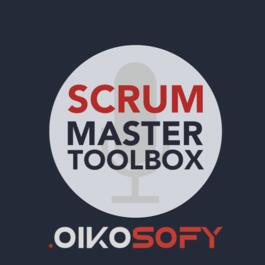
CTO Series: How Open Strategy and Agile Practices Drive Success at NorthCode With Ismo Aro
CTO Series: How Open Strategy and Agile Practices Drive Success at NorthCode With Ismo Aro In this BONUS episode, we sit down with Ismo Aro, CTO and partner at NorthCode, to delve into the transformative power of Open Strategy in the tech world. Ismo shares his journey from corporate roles at Nokia and Ericsson to becoming a full-time entrepreneur, and he unpacks how his approach to leadership evolved with the rise of agile methodologies, test automation, and cloud transformation. This episode is packed with actionable insights for anyone looking to modernize their company’s strategy and foster a culture of transparency and co-ownership. Pivotal Career Moments: From Waterfall to Agile Mindset “When I joined the agile pilot team, it felt like discovering the way software development should always be done—release early, get feedback fast, and improve continuously.” Ismo reflects on his early days at Nokia, where he began as a test engineer in a traditional waterfall environment. He describes how the shift to agile methodologies transformed the way teams communicated and collaborated. When he joined a pilot project for Scrum, he realized the value of fast feedback loops and early releases. This experience laid the foundation for his future focus on continuous integration and test automation. Key Takeaway: Adopting agile frameworks can improve workflows by shortening feedback loops and promoting direct communication. The Essence of Open Strategy “Open Strategy means involving everyone in shaping the direction of the company—not just receiving updates but truly co-creating the future.” At NorthCode, Open Strategy is a cornerstone of their operations. Ismo explains how they empower employees by making strategy-building a transparent and collaborative process. The company’s structure includes a parent company and subsidiaries where employees are also co-owners. Revenue-sharing ensures that when the business succeeds, everyone benefits directly. Key Elements of Open Strategy: Transparency: Strategy is made visible through a kanban board and KPIs accessible to all. Ownership: Subsidiary team members can own up to 80% of their company. Profit-sharing: 80% of client revenue goes to the subsidiary, and dividends are shared annually. “By aligning incentives and opening up the strategy process, you create a culture where employees don’t just work for you—they work with you.” How Open Strategy Unfolds Annually “We make ideas visible and let them evolve until they’re ready for execution.” Ismo outlines the company’s approach to strategy using a high-level roadmap and clear metrics to track progress. The focus is on organic growth through subsidiaries, with a benchmark of starting a new subsidiary once a team reaches 20 people. The company also uses “business spikes”—short, low-cost experiments to test new ideas. Practical Tip: A business spike allows you to explore an idea quickly without committing significant resources, making it easier to pivot when necessary. Navigating Challenges in Open Strategy “Some people want to co-create, while others prefer to focus on their work—and both are valid.” Ismo acknowledges that not everyone in the organization is equally interested in strategic discussions, and that’s okay. Open Strategy doesn’t require everyone to participate equally—it provides opportunities for involvement at different levels. The key is fostering an environment where insights and information flow freely from the ground up, rather than top-down mandates. Key Insight: Open Strategy thrives when participation is voluntary and inclusive, rather than forced. Measuring Success: KPIs and Transparency “We believe in showing our utilization rates openly because our people have a stake in the results.” To measure success, NorthCode tracks KPIs such as revenue, profit, and utilization rates. Unlike traditional consulting companies that keep these metrics private, NorthCode shares them openly to build trust and foster a sense of ownership. Monthly meetings focus on tactical updates, while strategic sessions aim to inspire employees to contribute ideas for the company’s future. Fun Practice: The “nightmare competitor” exercise encourages the team to imagine an ideal competitor and then adopt some of their hypothetical best practices into NorthCode’s strategy. “When people can see the metrics that matter, they’re more motivated to take ownership of their impact.” Inspiration from Open Strategy and Business Agility “We take concepts from corporate books and tailor them to fit our context as a growing, agile company.” Ismo cites two key books that shaped his thinking: Open Strategy and The 6 Enablers of Business Agility. However, he emphasizes the importance of adapting corporate-level concepts to suit smaller, more agile organizations. He believes that while agile is mainstream in software development, many companies remain rigid in their overall strategy. Recommended Reads: Open Strategy: Mastering Disruption from Outside the C-Suite by Stadler et al. The 6 Enablers of Business Agility by Harbott Key Reflection: Ismo’s approach underscores the importance of agility not just in software but in company operations and strategy-making. Final Tip: Embrace modern tools like Large Language Models (LLMs) to streamline workflows—but remember, they enhance your work, not replace it. About Ismo Aro Ismo Aro is the CTO and partner at NorthCode, specializing in software development and workflow modernization. With experience at Nokia and Ericsson, he has held various roles, from test engineer to entrepreneur. Ismo co-founded NorthCode after selling a previous company and also served as Chairman of the Robot Framework Foundation, contributing to the growth of the widely used open-source test automation framework. You can link with Ismo Aro on LinkedIn.
From "Scrum Master Toolbox Podcast: Agile storytelling from the trenches"


Comments
Add comment Feedback